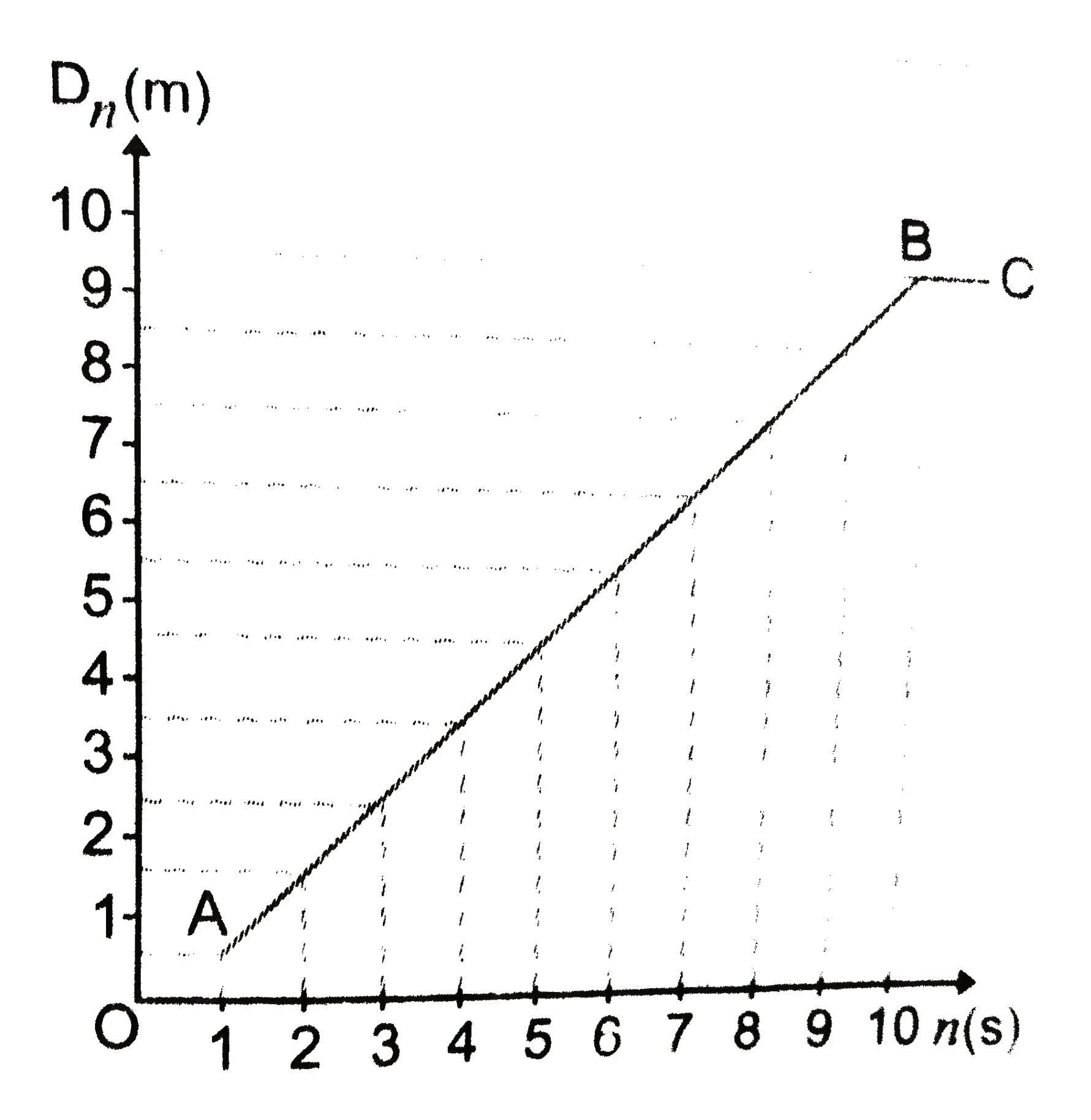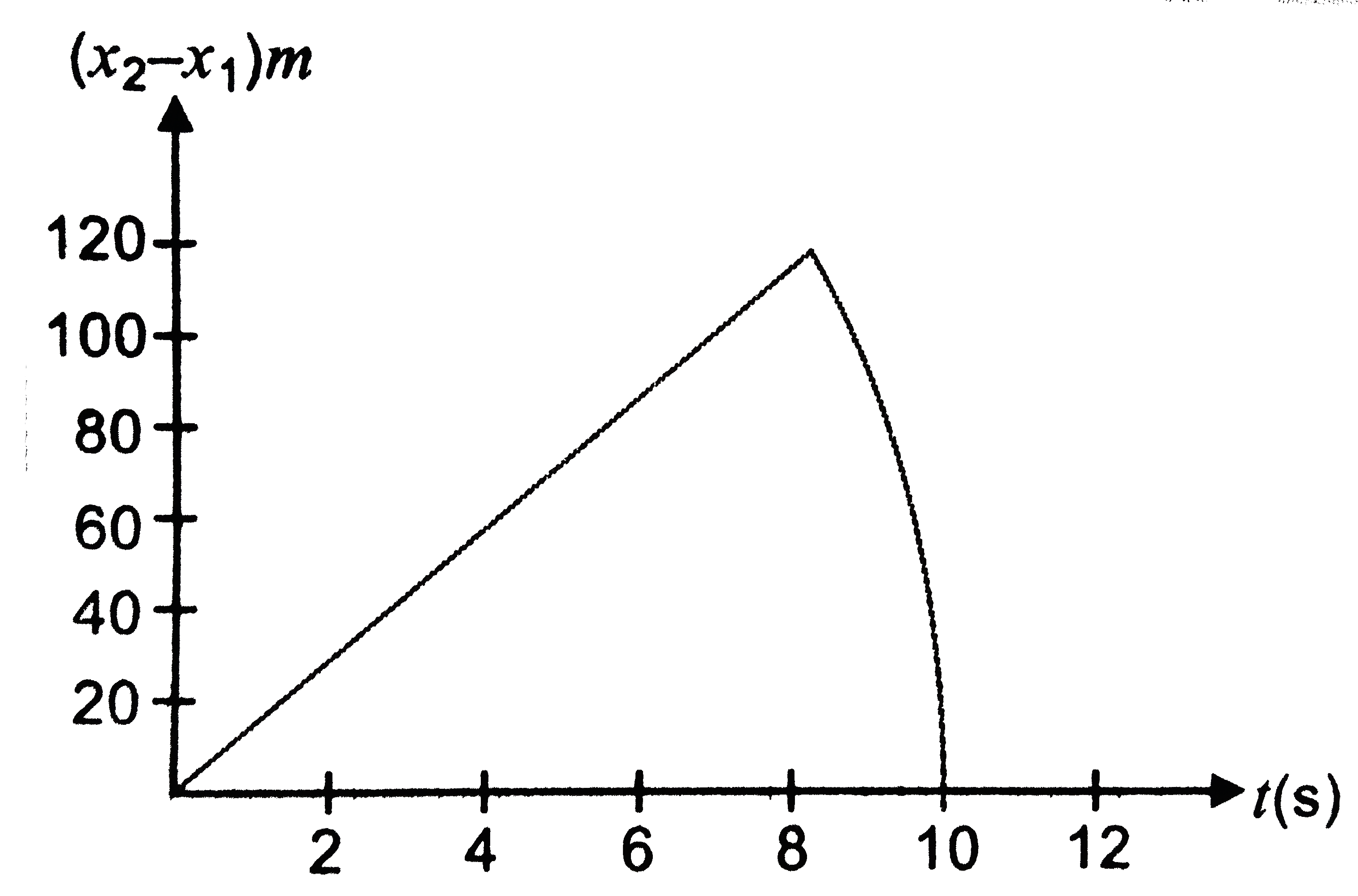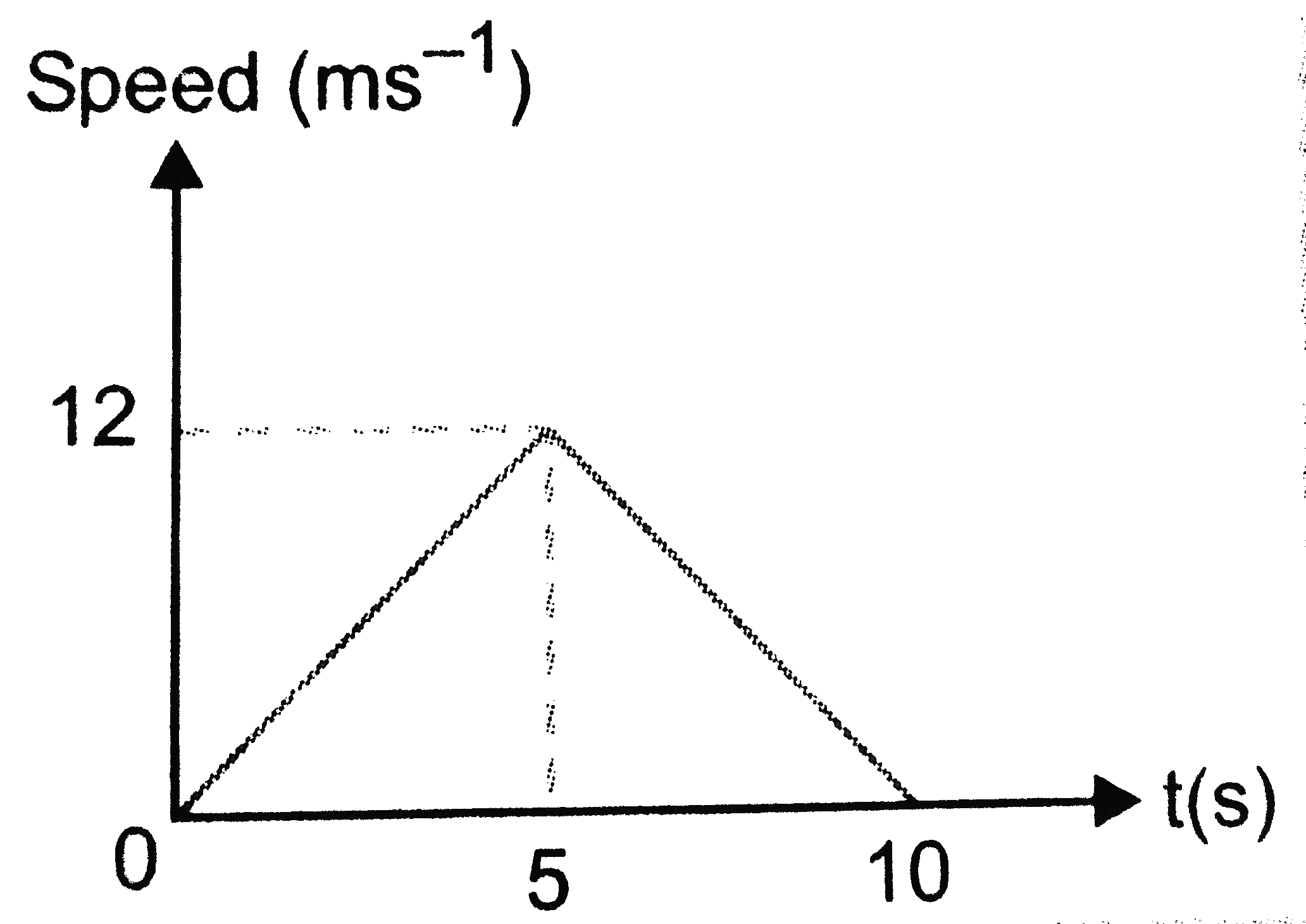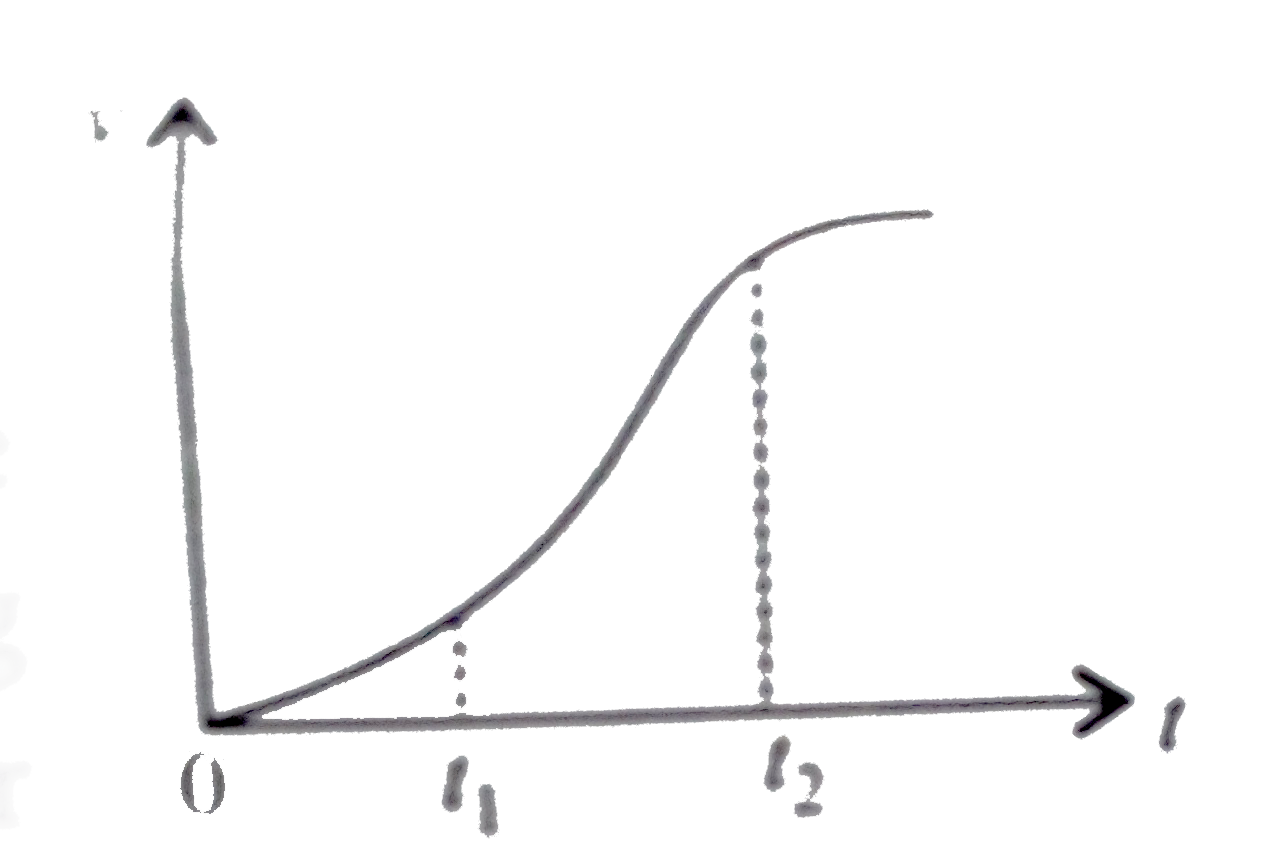Complete Solutions to Additional Exercises of chapter KINEMATICS of Class 11 book with complete answers and questions
| Class 11 | PHYSICS |
| Chapter | KINEMATICS |
| PRADEEP | Additional Exercises |
| Number Of Questions | 13 |
| Academic Year | 2023-24 |
A three wheeler starts from rest, accelrates uniformly with ` 1 ms^(-2)` on a straight road for ` 10 s` and then moves with uniform velocity . Plot a graph between the distance coverd by the vehicle during the nth second ( n = 1,2,3, ……..) v ersus (n) What do you expect the plot to be during acclerated motion: a straight line or a parabola ?
 .09:06View Solution
.09:06View SolutionA boy standing on a stationary lift ( open from above ) thrown a ball upwards with the maximum initial speed he can, equal to ` 49 ms^(-1)`. How much time does the ball take to return to his hands ? If the lift starts moving up with a uniform speed of ` 5 ms^(-1)` and the boy again throws the ball up with the maximum speed he can , how hoes the ball take to return to his hands ?
06:48View SolutionA long belt is moving horizontally with a speed of `5 km h^(-1)`. A child runs on this belt to and fro with a speed of `9 km//h` (w.r.t. bett) between his father and mother located `50 m` apart on the belt. For an observer on a stationalry plateform outsied, what is the
(a) speed of the chils runningin the derection of motion of the belt, (b) speed of thechaild runing opposite to thedirection of the belt, and (c ) time taken by the child in cases (a) and (b) ? Which of theanswers change, if motion is viewed by one of the parents ?gt07:16View SolutionTwo stones are thrown up simultaneously from the edge of a cliff ` 200 m` high with initial speeds of ` 15 ms?^(-1)` and ` 30^(-1)`. Verify that the graph shown in Fig. 2 ( NCT). 13 , correctly represents the time variation of the relativ e position of the second stone with respect to the first. Neglect the air resistance and assume that the stones do not rebound after hitting the ground. Taje ` g= 10 ms^(-2)`.Give equations for the linear and curved parts of the plot.
 .09:37View Solution
.09:37View SolutionThe speed -time graph of a particle moving along a fixed direction id shown ifn Fig. 2 (b) . 31. Fid (i) distance travelled by the particle between ` 0 sec` to ` 10 sec` (ii) average speed between thid interval (iii) the time when the speed was minimum (iv) the time when the speed was maximum.
 .02:50View Solution
.02:50View SolutionThe velocity-time graph of a particle in one-dimensional motion is shown in the figure. Which of the following formulae is correct for describing the motion of the particle over the time interval `t_1` to `t_2`?
 04:12View Solution
04:12View SolutionA vector has magnitude and dirction 9i) Does it have a olocition in the sparce ? (ii) Can it vary with time ? (iii) Will two equal vectors ` vec a` and vec b` different locations in sparc necessarily have identical phusical effects ? Give examples in support of your answer.
03:16View SolutionA vector has both magnitude and direction. Does that mean anything that has magnitude and direction is necessarily a vector ? The rotation of a body can specitied by the direction of the axis of rotation and the angle of rotation about th axis. Does tha make any rotation a vector ?
05:01View SolutionCan you associate vectors with (a) the length of a wire bent into a loop (b) a plane area (c ) a sphere ? Explain.
02:54View SolutionA bullet fired at an angle of `30^@` with the horizontal hits the ground 3.0 km away. By adjusting its angle of projection, can one hope to hit a target 5.0 km away? Assume the muzzle speed to be fixed and neglect air resistance.
02:23View SolutionA fightre plane flying horizontally at an altitude oa ` 1.5 km` with speed ` 720 h^(-1)` passes directly over head an anticraft gun. At what angle from the vertical should the gun be fired from the shell with muzzle speed ` 600 ms^(-1)` to hit plane. At what minimum altitude showld the pilot fly the plane to avoid being hit ? ( Take g= 10 ms^(-2)).
07:22View SolutionA cylclist is riding with a speed of `27 km h^-1`. As he approaches a circular turn on the road of radius `80 m`, he applies brakes and reduces his speed at the constant rate of `0.5 ms^-2`. What is the magnitude and direction of the net acceleration of the cyclist on the circular turn ?
03:33View Solution(a) Show that for a projectile the angle between the velocity and the x-axis as function of time is given
` by ` theta_(t) = tam ^(-1) ( 9 4 h_m)/R)`
where the sybols have thir usual meanings.01:41View Solution
Additional Exercises questions and complete solutions for chapter KINEMATICS of PRADEEP PHYSICS (HINGLISH) of Class 11
All Exercises from PRADEEP Class 11 PHYSICS KINEMATICS
- 1 Problems for practice
- 1 Con ceptual Problems
- 1 Conceptual Problems
- 1 Fill in the blanks
- 1 Long answer
- 1 Multiple choice
- 1 NCERT Assertion-Reaseon Type
- 1 NCERT Comprehension
- 1 NCERT multiple
- 1 Short answer
- 1 SolvedExamples
- 1 Very short
- 2 Con ceptual Problems
- 2 Fill in the blanks
- 2 Long answer
- 2 Multiple choice
- 2 NCERT multiple
- 2 Problems for practice
- 2 Short answer
- 2 SolvedExamples
- 2 Very short
- 3 Con ceptual Problems
- 3 Fill in the blanks
- 3 Long answer
- 3 Multiple choice
- 3 NCERT multiple
- 3 Problems for practice
- 3 Short answer
- 3 SolvedExamples
- 3 Very short
- 4 Con ceptual Problems
- 4 Conceptual Problems
- 4 Fill in the blanks
- 4 Long answer
- 4 Multiple choice
- 4 NCERT Integer type
- 4 NCERT multiple Choice
- 4 Problems for practice
- 4 Short answer
- 4 SolvedExamples
- 4 Very short
- 5 Long answer (NCERT)
- 5 Short answer
- 5 Very short
- 6 Long answer (NCERT)
- 6 Short answer
- 6 Very short
- Additional Exercises
- Advanced Problems
- Higher order thinking skills
- Motion
- NCRT Exercises
- Sample Promlem
- Value based
